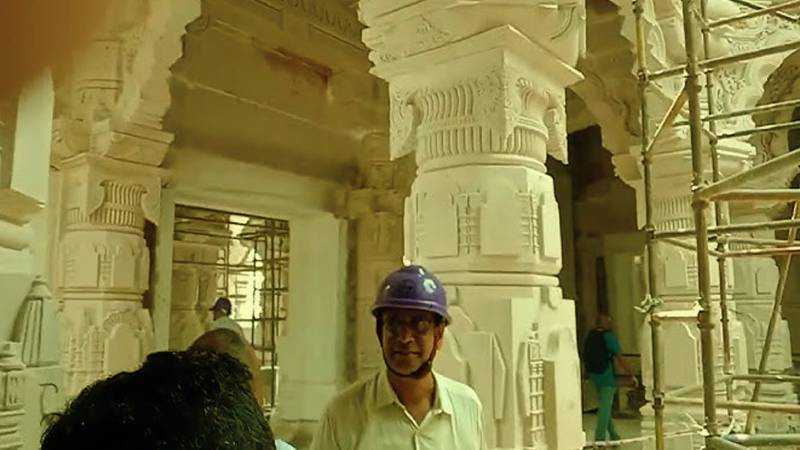
An Indian official announced on Wednesday that the first phase of the Ram Temple project in the northern Indian town of Ayodhya will be completed in December and that it will be accessible to pilgrims in January.
Hindus and Muslims have been embroiled in a bitter conflict about the location of the temple for a long time.
Prior to the Muslim Mughals' building of the Babri mosque in 1528, Hindus regarded the location as the birthplace of Lord Ram and considered it sacred. A Hindu mob demolished the mosque in 1992, sparking extensive riots across India that claimed the lives of almost 2,000 people—mostly Muslims.
The property was granted to Hindus by India's Supreme Court in 2019, opening the way for the construction of a Hindu temple, a project that Prime Minister Narendra Modi's ruling Hindu-nationalist party has long backed.
According to Nripendra Misra, the head of the construction committee for the Shri Ramjanmabhoomi Temple, Modi has been asked to participate in the inauguration ceremony's prayers.
"The ground floor (of the temple) will be completed in December 2023, and once it is finished and the Lord has moved to the sanctum sanctorum, we have to permit devotees to come and pray," Misra added.
In late 1992, a Hindu mob demolished the centuries-old Babri mosque in the revered Indian city of Ayodhya, setting off violent religious riots that claimed almost 2,000 lives across the country.
Negotiations between the Muslim group All India Babri Masjid Action Committee and the Hindu nationalist movement Vishva Hindu Parishad (VHP) to settle the conflict were fruitless.
The Ram temple construction movement then gained momentum in 1991 after the Hindu nationalist Bharatiya Janata Party (BJP), led by current Indian Prime Minister Narendra Modi, won the state of Uttar Pradesh.
In an effort to prevent Hindu volunteers from encroaching on the mosque, the state government began purchasing land next to the contentious edifice. A state court, however, denied the plan.
A group of Hindus who had assembled for a demonstration close by on December 6, 1992, scaled the mosque and began smashing the domes with axes and hammers. The entire building was quickly leveled to the ground.
Shankar Dayal Sharma, the president of India at the time, dissolved the state assembly and took over all of the responsibilities of the Uttar Pradesh administration. Through an executive order issued in 1993, the federal government purchased all of the disputed land, bringing the total acreage to 67.7 acres.
The major area where the mosque originally stood shall be divided into three sections, one for Muslims and two for Hindus, as the Allahabad High Court ordered in September 2010.
The court acknowledged the challenge of deciding on such a delicate subject in its order.

